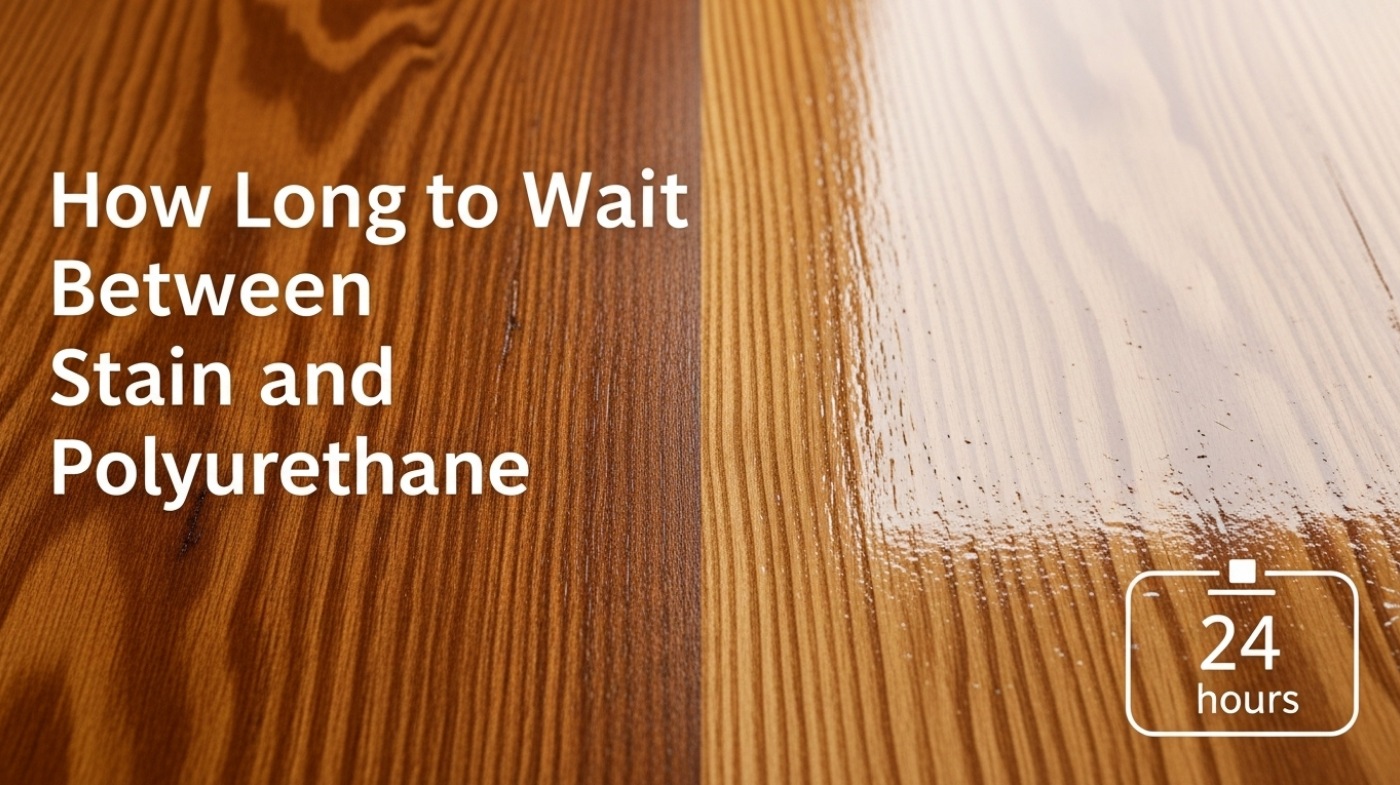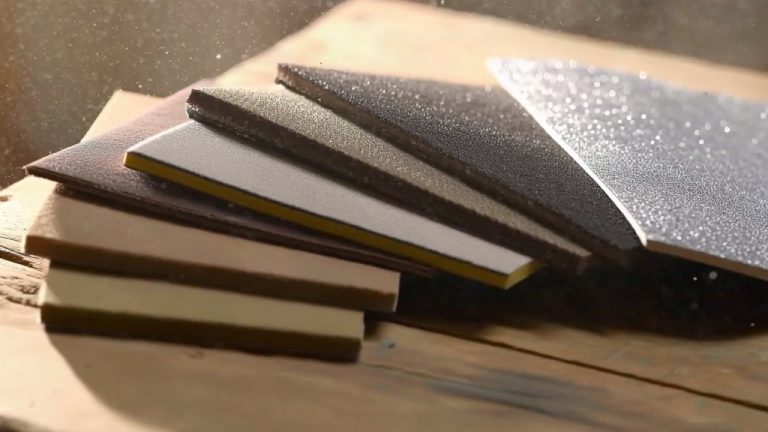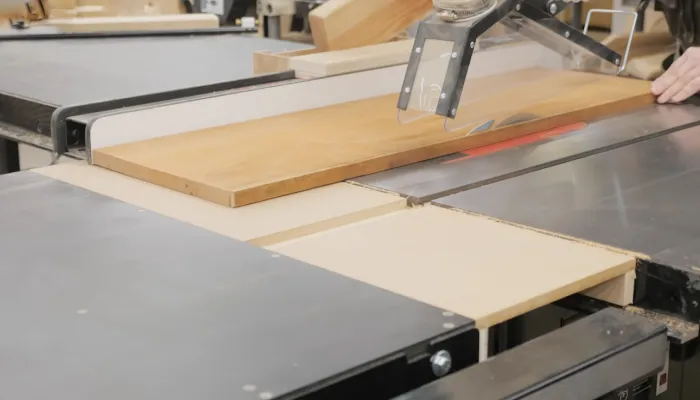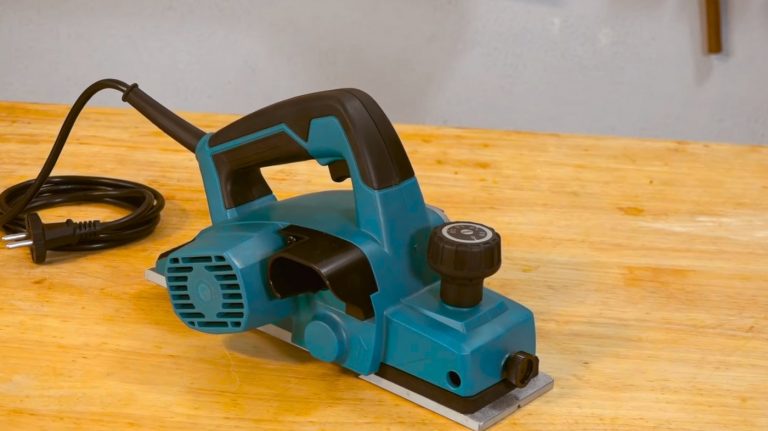How Long to Wait Between Stain and Polyurethane? Expert Tips
You should wait 24 hours after applying a water-based stain and 48 to 72 hours after an oil-based stain before applying polyurethane.
This guarantees the stain is fully dry, non-tacky, and properly cured for peak adhesion and finish durability. Applying polyurethane too soon can cause issues like cloudiness or peeling.
Factors like humidity and temperature affect drying time, so consider those as well. Understanding these details will help you achieve a flawless, long-lasting finish.
Key Takeaways
- Wait 24 hours after water-based stains and 48–72 hours after oil-based stains before applying polyurethane for proper drying and curing.
- Confirm the stain is fully dry, smooth, and free of tackiness, odor, or wet spots before applying polyurethane.
- Lightly sand the stained surface and remove all dust to enhance polyurethane adhesion and prevent finish issues.
- Apply thin, even coats of stain to ensure faster drying and better polyurethane adhesion.
- Avoid high humidity and low temperatures, as they prolong stain drying and delay safe polyurethane application.
Understanding Drying Times for Different Types of Stain
Although drying times vary widely, understanding the specific drying characteristics of oil-based, water-based, and hybrid stains is essential before applying polyurethane.
Oil-based stains need 12 to 24 hours to dry to the touch and fully cure in 48 to 72 hours. This is due to slower solvent evaporation and deep wood penetration. It is crucial to ensure the stain has fully cured to prevent issues like water spots and uneven finish after polyurethane application. Using the correct grit progression before staining can improve adhesion and final appearance.
Water-based stains dry faster, typically 1 to 6 hours to the touch. However, they require at least 24 hours of dry weather for proper curing and to avoid moisture issues.
Hybrid stains offer a balance. They dry initially in 2 to 4 hours but still require 8 to 12 hours before exposure to moisture. Selecting appropriate sanding materials and following proper sanding techniques will help achieve a smooth base for both stain and polyurethane application.
Factors Influencing the Waiting Period Before Polyurethane
When determining how long to wait before applying polyurethane, you must consider several critical factors that influence the stain’s drying and curing time.
Environmental conditions like humidity above 70%, temperature outside 70°F–80°F, poor air circulation, and inadequate ventilation can considerably prolong drying. Good ventilation aids evaporation, speeding up the drying process. Additionally, sanding the surface with the right sandpaper grit before finishing ensures better adhesion and a smoother final coat.
Your application technique also matters: thicker stain coats and oil-based stains require longer drying than thin coats and water-based stains.
Confirm full stain absorption and surface dryness before proceeding to avoid adhesion problems.
Wood species and moisture content affect drying; dense or damp woods slow stain cure.
Finally, product formulation, including stain solvent base, additives, pigment concentration, and compatibility with polyurethane, governs wait times.
Comparing Water-Based and Oil-Based Polyurethane Wait Times
When you’re trying to decide between water-based and oil-based polyurethane, one of the first things you’ll want to think about is their drying times. Water-based polyurethane typically dries in about 2 to 4 hours, which is pretty quick, right? It also tends to have insignificant odor, making it safer and more pleasant to work with indoors. Additionally, the faster drying time helps reduce downtime between coats, improving overall project efficiency.
On the other hand, oil-based options take a bit longer, usually needing around 6 to 10 hours or even more in some cases. These finishes often provide superior durability and protection, making them ideal for high-traffic areas or heavy-use surfaces.
But wait, there’s more to consider! Environmental factors like temperature and humidity can really play a role in how long it takes for these finishes to dry. So, if you’re working in a particularly humid area or during a cold snap, you might find yourself waiting a little longer than expected.
It’s definitely something to keep in mind as you plan your project.
Now, let’s talk about durability. This is where it gets interesting. Oil-based polyurethane can take up to 30 days to fully cure, which is quite a commitment.
In contrast, water-based options are ready to go in about 7 to 14 days. So, if you’re looking for something that cures faster, water-based might be the way to go!
Drying Time Differences
Since drying times vary substantially between water-based and oil-based polyurethane, understanding these differences is crucial for scheduling your project efficiently.
Water-based polyurethane dries to the touch in 2–4 hours and allows recoating within this window if the surface isn’t tacky and sands to powder. This enables multiple coats in a single day, accelerating project completion. However, even after drying, full curing can take up to 7–14 days, during which the finish gains maximum durability and resistance. The cutting depth of tools used in finishing, such as circular saws, can influence how quickly surfaces are prepared for staining and sealing.
In contrast, oil-based polyurethane requires 6–10 hours or longer to dry to the touch, often extending recoat times to 24 hours or more. Its longer drying and curing phases necessitate spacing coats over several days.
Always verify dryness by touch and sandability before recoating, as environmental factors like humidity and temperature can prolong drying.
Environmental and Durability Factors
Understanding drying time differences between water-based and oil-based polyurethane sets the stage for considering how environmental conditions impact these wait periods. High humidity and low temperatures slow solvent evaporation, extending wait times notably for oil-based polyurethane due to its slower curing.
Good ventilation and indirect sunlight accelerate drying, particularly benefiting water-based finishes. Seasonally, colder, damper conditions considerably prolong oil-based polyurethane curing compared to water-based.
Durability-wise, oil-based polyurethane requires longer wait times, often 8–24 hours or more, to guarantee full curing and adhesion, delivering superior chemical resistance and wear durability.
Water-based polyurethane dries faster, permitting shorter waits (1–2 hours), but with less resilience. Proper compatibility between stain and polyurethane type is vital; mismatches or insufficient curing risk adhesion failures, especially with oil-based systems, impacting long-term finish integrity.
Additionally, just as blade thickness affects saw performance and precision, the thickness and application technique of polyurethane layers also influence drying times and final durability.
Best Practices to Ensure Proper Adhesion of Polyurethane
Although polyurethane offers strong adhesion properties, achieving a durable bond depends heavily on meticulous surface preparation.
You must guarantee the surface is clean, dry, and free from dust, grease, or oily residues.
Lightly sanding shiny or sealed surfaces creates mechanical texture, enhancing adhesion.
Remove all sanding dust thoroughly with a vacuum or tack cloth to prevent bonding issues.
Before application, confirm the stain is fully dry, typically 24 to 48 hours, then lightly sand to remove irregularities without stripping the stain.
Maintain ambient temperature above 40°F and moderate humidity during application. Be mindful that excessive dust generation, similar to that encountered when cutting drywall, can compromise the finish quality, so proper ventilation and cleanup are essential to avoid dust accumulation.
It is important to apply polyurethane evenly on both surfaces and clamp tightly to ensure a durable, long-lasting bond.
Testing adhesion on a small, inconspicuous area helps verify compatibility and preparation.
For challenging surfaces, consider using a dewaxed shellac primer to improve bonding.
Tips for Speeding Up Drying Between Stain and Polyurethane
When you want to speed up drying between stain and polyurethane, controlling environmental factors is essential. You should maintain a temperature between 60°F and 90°F and keep relative humidity below 60% to optimize drying times.
It is important to avoid extreme environmental conditions to prevent uneven drying or finish issues, which can compromise the quality of the finish. Increasing air circulation with fans promotes solvent evaporation without causing dust contamination. Additionally, selecting the right products can substantially reduce drying time. Applying a compatible primer or shellac before polyurethane can also help achieve a smoother finish and better adhesion.
To accelerate drying, follow these key steps:
- Use water-based polyurethane instead of oil-based for faster curing. Water-based dries to touch in about 2 hours.
- Apply thin, even coats in the wood grain direction to avoid puddling and uneven drying.
- Employ drying accelerators or thin the finish slightly according to manufacturer guidelines to enhance solvent evaporation and ensure proper bonding.
Recognizing When the Stain Is Ready for Polyurethane Application
Before applying polyurethane, you must verify the stain has fully dried to avoid finish defects.
Check that the surface feels smooth, dry to the touch, and free from tackiness or stickiness.
Wipe a clean cloth over the wood; it shouldn’t pick up any color.
Inspect for the absence of wet spots, glossy patches, or solvent odors.
Follow the manufacturer’s guidelines closely.
Oil-based stains generally require 12–24 hours, while water-based stains dry in 4–8 hours under ideal conditions (70–75°F, low humidity, good airflow).
Remember, wood species affect drying times: hardwoods dry faster than softwoods.
Applying thin, even coats of stain and promptly wiping off excess can significantly promote quicker drying before polyurethane application.
Premature polyurethane application can cause bleeding, cloudiness, poor adhesion, and long-term finish failure.
Confirm these indicators before proceeding to ensure a durable, flawless finish.
Additionally, using tools with precise adjustments can help maintain the smoothness of the wood surface before sealing.
Frequently Asked Questions
Can I Apply Polyurethane Over Stained Wood Outdoors?
You shouldn’t apply standard polyurethane over stained wood outdoors because it lacks flexibility and UV resistance, which leads to cracking and peeling.
Instead, choose marine varnish or spar urethane designed for exterior use.
These finishes handle moisture and temperature changes better.
If you still want to use polyurethane, reserve it for indoor projects where the wood is protected from weather and foot traffic.
Always pick products specifically formulated for outdoor durability.
Does the Type of Wood Affect Stain Drying Time?
Think of wood as a thirsty sponge. Softwoods like pine drink stain deeply, making drying slower, while hardwoods such as maple barely sip, drying faster.
The wood’s porosity and resin content directly control stain absorption and evaporation rates. So yes, the type of wood profoundly affects drying time.
Porous woods demand longer waits between coats, whereas dense woods allow you to move quicker with your finishing process.
How Does Stain Color Influence Drying and Wait Times?
Darker stain colors usually require longer drying times because their higher pigment load traps solvents beneath the surface, risking adhesion issues if sealed too soon.
Light stains dry faster since thinner pigment layers let solvents evaporate more readily.
Applying multiple coats or using opaque, deep colors extends wait times further.
You’ll want to modify drying periods based on color depth to ensure the stain cures fully before polyurethane application.
Is It Necessary to Use a Sealer Before Polyurethane?
You don’t always need to use a sealer before polyurethane, but it’s advisable for porous, blotch-prone woods like pine or birch.
Sealers enhance adhesion, prevent stain bleeding, and reduce blotching.
If you’re applying water-based polyurethane over oil-based stains or working with unfinished wood, a sealer improves compatibility and finish quality.
Always guarantee the stain is fully dry before applying sealer and follow manufacturer drying time recommendations for ideal results.
Can I Reapply Stain if I Wait Too Long Before Polyurethane?
You can reapply stain if you wait too long before polyurethane. Just know that over 72 hours typically requires surface prep.
Lightly sanding and cleaning are essential to guarantee proper adhesion, since fully cured stains become less porous.
After sanding, use mineral spirits or a tack cloth to remove dust. Then, re-stain and allow it to dry completely before applying polyurethane.
This method maintains finish quality and adhesion effectively.
Maximize Finish Quality: Wait the Right Amount Between Stain and Polyurethane
Waiting the right amount of time between applying stain and polyurethane isn’t just a suggestion; it’s your project’s lifeline.
If you rush, you risk tackiness or poor adhesion; wait too long, and reactivation issues may arise. Remember, water-based polyurethanes dry faster than oil-based ones, so adjust accordingly.
By understanding drying times and factors involved, you ensure a flawless finish that lasts. So, don’t just guess; let patience be your precision tool.







